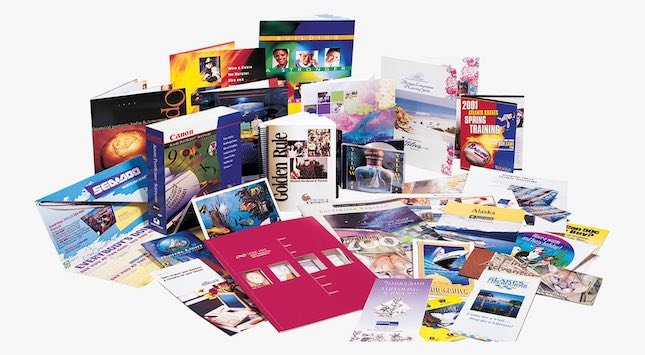Food production is one of the many industries that have witnessed a tremendous technological revolution.
Most technological solutions in this sector target high-yield volumes by deploying cutting-edge farming methods. Some are aimed at prolonging the shelf life of certain foods to minimize wastage and possibly forestall a shortage of such products.
You’ll also find solutions that streamline distribution processes by ensuring that finished goods reach the intended customers within the least expense of time. Here’s a rundown of the five most advanced technologies in food production.
1. Remote Sensing Technology for Agriculture
As the name implies, remote sensing technology is a term for various solutions utilizing tech gadgets to remotely monitor agricultural farms. These methods fall into several categories. Notable mentions include yield monitoring sensors and variable rate fertilizer application tools.
Yield monitoring sensors are gadgets such as GPS sensors mounted on crop harvesting equipment like corn harvesters to collect spatial coordinate data. The data is then combined with other useful information to generate yield maps. Farmers can use yield monitoring sensors to remotely know their crops’ weight yield by time, distance, etc.
Variable rate fertilizer application tools rely on yield maps to determine the general plant health based on coloration. These equipment can either be manual or automated.
Besides the above two, there are many other innovative food and energy roduction methods. They include weed mapping, salinity mapping, and variable spraying controllers, to mention but a few.
2. GMOs
Genetically modified organisms are not exactly a new concept. But, technology has been a subject of discourse for several years due to its moral dilemma.
The continued resistance to genetically-modified foods stems primarily from the misinformation around this technology. Numerous myths and misconceptions have been flying around with regard to the long-term impacts of GMOs, including the ridiculous assertions that these products may significantly alter the human genome.
However, GMOs offer numerous benefits, the most notable being food security. The technology entails altering the DNA of seeds with a view to making the resultant crops more resistant to pests and diseases. Some crops are genetically engineered to grow considerably faster while requiring minimal watering and fertilization.
You May Like to Read: Tips for Finalizing a Food Service Management System
3. Food Irradiation
Food irradiation, sometimes known as food radurization or radurisation, refers to exposing manufactured products to ionizing radiation to prolong their shelf life. The most commonly used radiation forms include gamma rays, x-rays, and electron beams.
Food irradiation is so effective because it inhibits the organisms that accelerate food spoilage. The technology can also prevent sprouting or ripening, making it effective at preserving seeds and fruits, respectively. Some researchers further cite food irradiation as a reliable method for combating foodborne diseases as well as controlling invasive pests and insects.
Expectedly, food irradiation has attracted a decent amount of criticism for being potentially harmful in the long run. Some studies indicate that this technology might trigger the formation of volatile toxic compounds like benzene and toluene.
However, according to the Centers for Disease Control and Prevention (CDC), the benefits of food irradiation far outweigh the potential drawbacks.
Many other reputable organizations share similar sentiments, including the U.S. Soy latest Food and Drug Administration (FDA) and the World Health Organization (WHO).
4. 3D Food Printing
Three-dimensional (3D) technology isn’t limited to computer systems. This ingenious concept is also widely applied in food production.
3D food printing basically entails manufacturing food products using various additive manufacturing techniques. One such method entails using food-grade syringes to hold the printing material, which manufacturers then deposit through a food-grade nozzle layer by layer.
Increased production is the primary benefit of 3D food printing. By placing ingredients layer by layer, this technology can also minimize wastage by reusing any leftover ingredients. The technology is also effective in terms of product customization. Designers can remotely create foods on their computers or smartphones. They can play around with different shapes, textures, colors, flavors, and nutrition.
The current iterations of 3D food printing only allow manufacturers to experiment with softer ingredients, such as jelly, cheese, purée, frosting, and mashed potatoes. Common foods manufactured using the technology include pizza, mustard, ketchup, and hot sauce.
5. Robotics
The use of robotics in the manufacturing sector is still a relatively new trend. That’s due to this technology’s initial resistance, with opponents arguing that it would render the human workforce redundant.
However, researchers have successfully proven that humans and machines can co-exist without necessarily canceling each other out. Despite the massive adoption of robotics in manufacturing, these equipment still requires humans to operate or service them.
In the food industry, robots are used primarily for sorting and packaging finished goods. These equipment also helps make light work of cutting and slicing beef or seafood. You’ll also stumble upon robotic dispensing machines, which are AI-powered dispensers designed to deliver predetermined amounts of food products like milk, fruit juices, coffee, and icing with military precision.
Below are other common applications of robotics in the food industry;
- Automating the cleaning and maintenance of food production factories
- Pelletizing and depalletizing
- Safely disposing of potentially hazardous by-products
- Providing customer support services
- Product Distribution
Summary
Technology has revolutionized the food industry, and most early adopters are already reaping big.
Whether you own a startup or multinational corporation, embracing technology is one of the soundest business decisions you can ever make.
You May Like to Read: Restaurant App Development: Costs and Key Features






